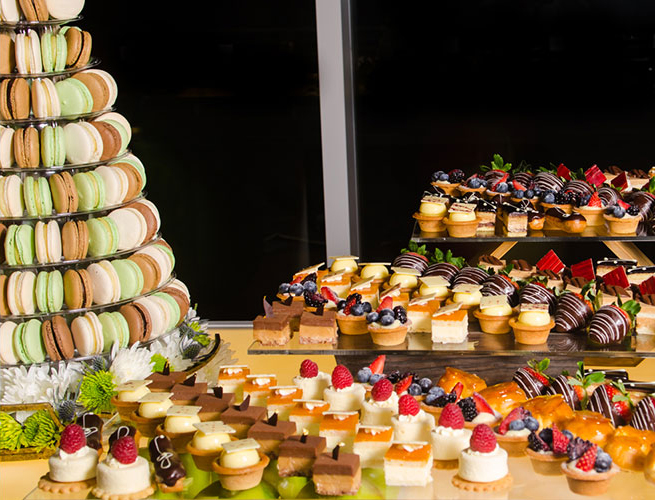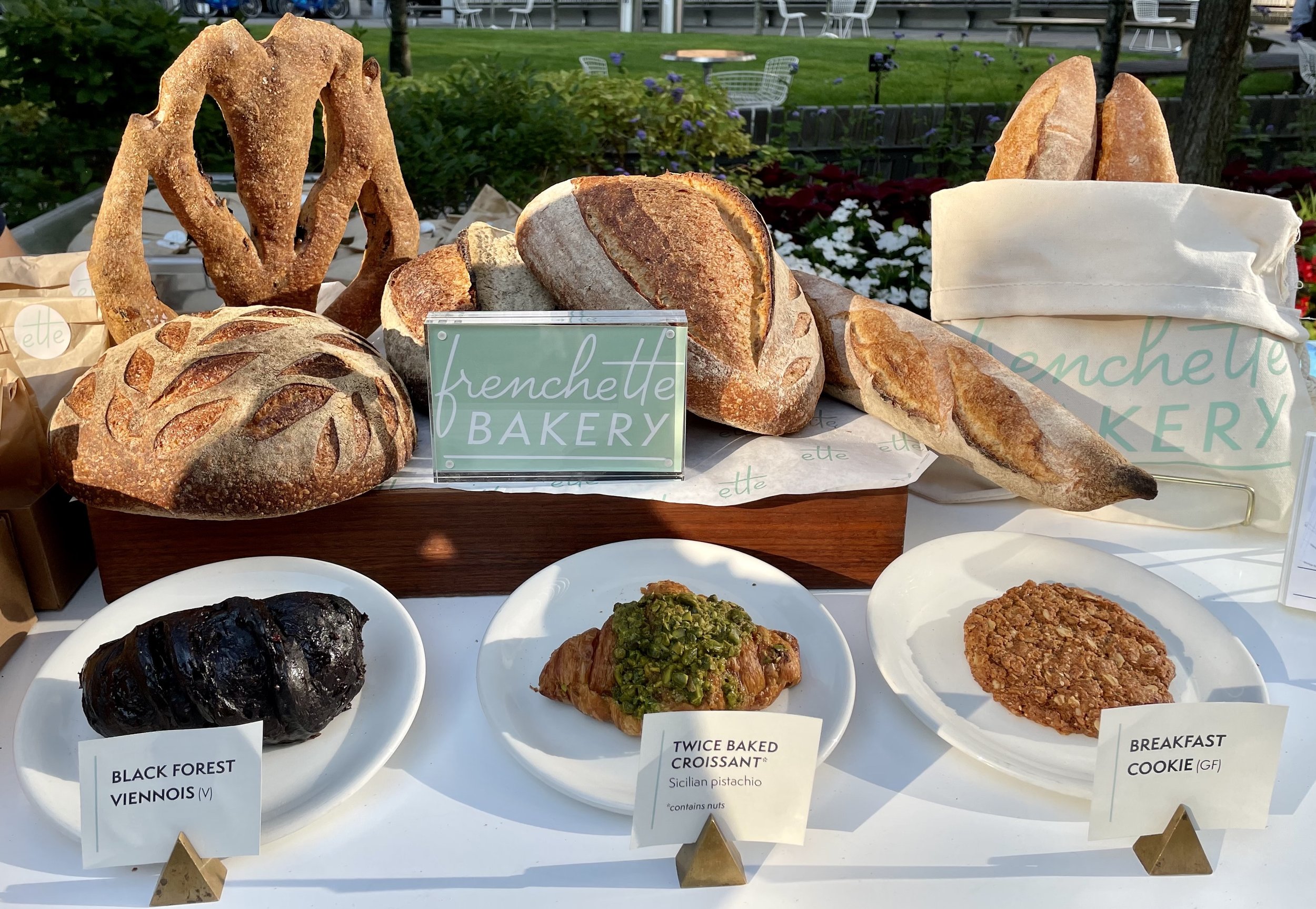Comprehending the Art of Pastry Shop Products: From Fresh Baked Breads to Irresistible Pastries and Finger Foods
The elaborate art of bakery products includes a spectrum of methods and active ingredients that change basic components into culinary delights. From the science behind the best loaf of bread, where fermentation and gluten growth play crucial duties, to the skill needed for developing split breads, each facet discloses an engaging story of workmanship. Furthermore, the versatility of finger foods illustrates how flavor and texture can be artfully combined to involve varied preference choices. As we explore these elements, one might wonder: what underlying concepts control the success of these precious developments?
The Science of Bread Making
At the heart of every loaf of bread exists a fascinating interplay of chemistry and biology. The procedure of bread making starts with the combination of flour, salt, yeast, and water-- each component playing an essential function in the last item.
Yeast, a living organism, ferments the sugars present in the flour, creating co2 and alcohol in the procedure. The carbon dioxide gas produces bubbles in the dough, creating it to climb and develop a light texture. The temperature and moisture throughout fermentation dramatically affect yeast activity and, as a result, the bread's taste and structure.

Learning Bread Methods
Just how can one accomplish the fragile balance of structure and flavor that defines exceptional pastry? Understanding pastry methods requires a deep understanding of components, approaches, and the science behind them. Essential to this craft is the option of premium active ingredients-- flour, butter, sugar, and eggs-- each playing an important duty in the final product's taste and appearance.
The technique of lamination, which includes folding layers of dough and butter, develops the desired flakiness in pastries like croissants and smoke bread. Precision in temperature level is vital, as butter must continue to be cool to make certain optimal layers. Appropriate blending approaches, such as the creaming technique for cakes, guarantee even consolidation of air and fat, resulting in a light and ventilated crumb.
In addition, maintaining the right humidity levels during baking can substantially influence the end result, ensuring that pastries rise correctly and achieve that golden-brown finish. Lastly, the art of pastry likewise demands persistence and method; each attempt improves one's skill and understanding of the elaborate balance required to create irresistible breads that thrill the detects. Proficiency in these methods ultimately distinguishes an experienced pastry cook from an amateur.
Kinds Of Finger Foods
The world of culinary thrills prolongs beyond pastries to include a vast selection of finger foods, which are commemorated for their benefit and versatility. These bite-sized deals with are best for social events, providing an array of tastes and structures that satisfy varied tastes buds.

On the sweeter side, bite-sized cupcakes and tiny tarts supply a fascinating finish to any meal, appealing to those with a craving for sweets. Cheese and charcuterie boards offer as an advanced option, enabling guests to customize their bites with an assortment of meats, fruits, cheeses, and nuts.
Flavor Profiles in Baking
Cooking is a detailed dancing of flavor profiles that combines pleasant, full-flavored, and umami notes to develop a harmonious experience for the palate. Understanding these accounts is crucial for bakers looking for to raise their creations.
Sweet taste usually works internet as the foundation in baked goods, with sugars, fruits, and all-natural sugar improving flavor deepness. Components such as chocolate and sugar present complex pleasant notes that can either control or match other flavors. Alternatively, savory aspects, typically found in breads and pastries, provide equilibrium and comparison. Ingredients like natural herbs, flavors, and cheeses can transform a straightforward dough into a multifaceted taste experience.
Umami, frequently forgotten in baking, plays a considerable duty in enriching tastes. Active ingredients such as aged cheeses, fermented products, or even particular nuts add to a tasty deepness that boosts overall taste.
In addition, the interaction of acidity from components like buttermilk or citrus enthusiasm can lighten up flavors, providing a rejuvenating counterpoint to sweet click this taste. By attentively combining these flavor accounts, bakers can craft items that reverberate with varied palates, creating an extraordinary cooking experience. Inevitably, mastering Homepage flavor profiles is essential to advancement on the planet of cooking.
Essential Cooking Devices and Active Ingredients
Comprehending flavor profiles in cooking collections the stage for selecting the right devices and components that help with the creation of exceptional baked items. A trustworthy set of baking frying pans-- such as sheet pans, loaf frying pans, and cake frying pans-- is important for achieving wanted shapes and textures.
Flour serves as the foundation of most dishes; choosing the best kind-- be it all-purpose, bread, or pastry flour-- can drastically affect the end result. Baking powder and baking soft drink are vital for developing lift in breads and cakes.
In addition, incorporating taste boosters like vanilla extract, flavors, and citrus enthusiasm can elevate your developments. By making certain access to these fundamental devices and active ingredients, bakers can confidently start their cooking trip, crafting a varied array of wonderful baked products.
Verdict
To conclude, the art of bakeshop products includes an extensive understanding of both clinical concepts and creative techniques. Proficiency in bread production, bread prep work, and finger food discussion discloses the detailed relationships between processes and ingredients. Exploring diverse taste accounts improves the baking experience, while crucial devices and components supply the foundation for success. Eventually, the enchanting world of cooking grows on the unified interaction of science and creativity, resulting in a myriad of fascinating cooking developments.
Just how can one accomplish the delicate equilibrium of texture and taste that defines remarkable bread? Essential to this craft is the selection of high-grade components-- flour, butter, sugar, and eggs-- each playing an important role in the last product's flavor and texture.

Recognizing taste accounts in cooking collections the phase for picking the right devices and active ingredients that promote the production of exceptional baked goods. Exploring varied taste accounts improves the baking experience, while necessary devices and components supply the foundation for success.